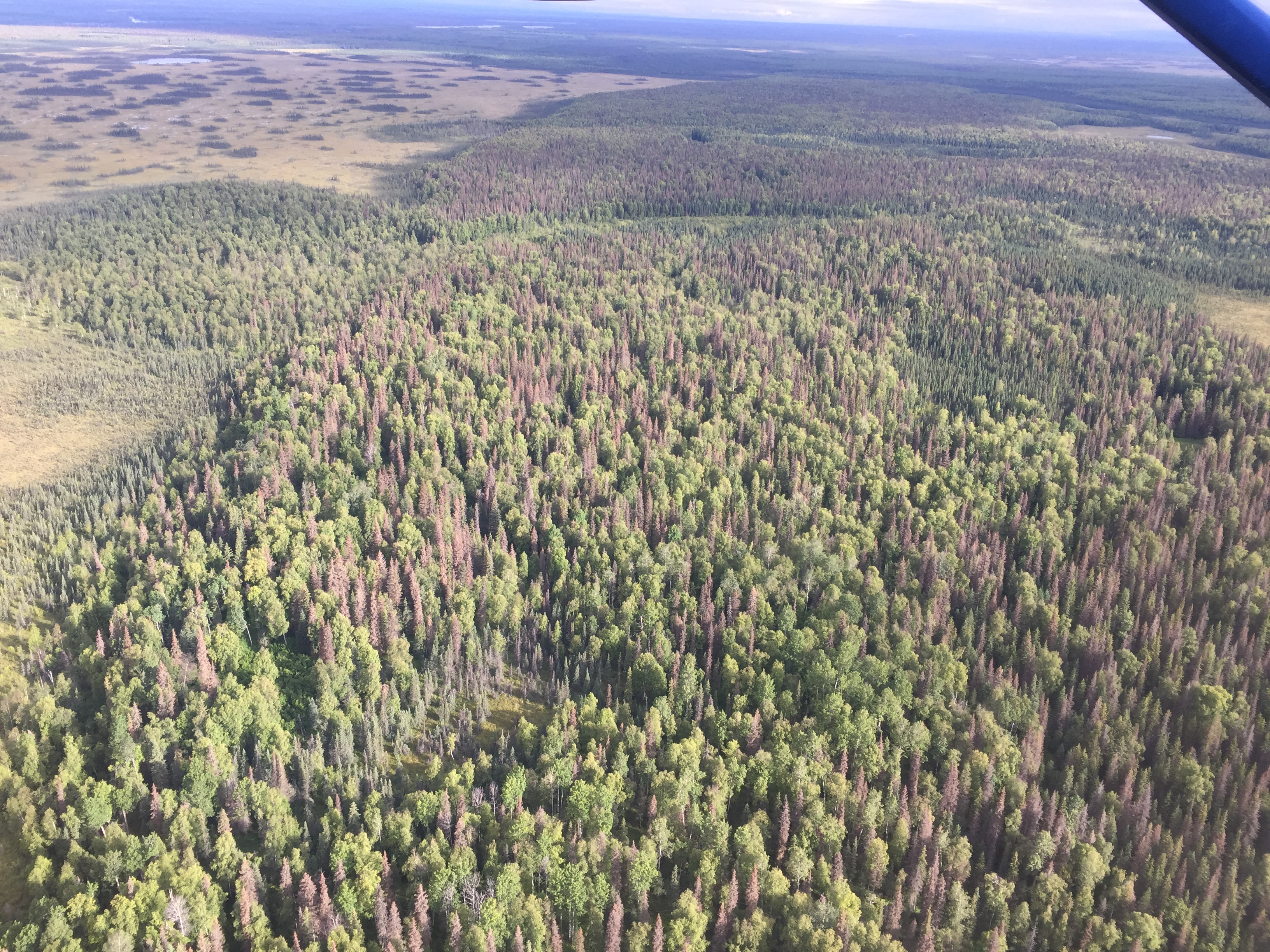
Spruce beetles may be native to Alaska, but they can still devastate a spruce forest.
The past two years, an outbreak concentrated in Southcentral Alaska’s Susitna River drainage and northwest Kenai Peninsula affected more than 500,000 acres of forest.
It’s the worst infestation since the 1990s.
A combination of factors causes a population to grow to the level of an outbreak, said Jason Moan of Alaska’s Division of Forestry.
“Spruce beetle favors large-diameter, slow-growing trees,” Moan said. “If we have wind events or things like that where a large number of trees might be blown over, you know, beetles tend to favor that material. They’re able to build up populations.”
Warm summers can also play a role because beetles tend to reproduce faster in warmer weather.
It takes one to two years for the beetles to complete their life cycles, and when the weather warms above 60 degrees, female beetles begin to take flight in search of new host trees, sending out pheromones to attract others when they’ve found a tree.
Larger, unhealthy trees are more susceptible to infestations.
“Folks can start keeping an eye on the spruce that they do that are not attacked,” Moan said. “Keeping those watered if they need it. Avoiding damage to those trees.”
Signs of an infestation include clumps of sap and sawdust where the beetles have bored holes in the bark as well as pieces of bark scattered at the base of the tree.
Discolored needles can also be an indicator but not always.
Once a tree is infested, Moan said not much can be done other than to remove it.
Pesticides can be effective in preventing beetles before they take flight but not after.
“In the current part of the beetle flight period, which usually runs from late May to somewhere into July, you know, we would just suggest avoiding cutting green trees,” Moan said. “Unless you’re going to be processing that soon.”
Beetle-killed spruce can be used for firewood and for lumber.
Beetles tend to live on the underside of a tree’s bark.
Moan said that over time, they’ve served as a natural part of forest ecosystems, making room for healthier younger trees, but many landowners want to manage outbreaks to limit the amount of destruction to their properties.
The Division of Forestry and their partners currently are working to develop new tools to help.
